Not giving up on natives
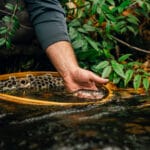
Southeast volunteers of all ages offer brook trout a hand

Southeast volunteers of all ages offer brook trout a hand
YETI makes grizzly-proof coolers and drinkware for the consumate outdoor adventurer. Jan. 21, 2016 Contact: Joel R. Johnson, Chief Marketing Officer, Trout Unlimited (646) 573-6410 FOR IMMEDIATE RELEASE: YETI supports Trout Unlimiteds conservation work across the nation WASHINGTON, D.C.YETI, a leading premium cooler and drinkware brand, made a substantial donation to Trout Unlimited right before…
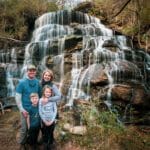
If you want to be in the same boat with someone, I’d suggest Matt Canter from Brookings Anglers.
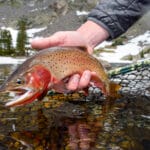
Snow is melting in the mountains, which has us dreaming about high country forays to catch native cutthroat trout.

As I’ve gotten older, this is the time of year I like the least — it’s cold, but it’s going to get colder. There’s snow now, but so much more to come

Pennsylvania’s native brook trout already face stessors. Climate change is making those stressor more accute. Photo by Chris Hunt. By Brian Wagner On March 27, I attended a program titled, “Roundtable on Climate Change: Effects on Fish, Wildlife and Forests,” at Wilkes University in Wilkes Barre, Pennsylvania. The program was put together by Ed Perry, who is the Pennsylvania outreach coordinator for the…

Pennsylvania’s native brook trout already face stessors. Climate change is making those stressor more accute. Photo by Chris Hunt. By Brian Wagner On March 27, I attended a program titled, “Roundtable on Climate Change: Effects on Fish, Wildlife and Forests,” at Wilkes University in Wilkes Barre, Pennsylvania. The program was put together by Ed Perry,…
Amicus brief filed in federal court case brought by Southern Environmental Law Center For immediate release 7/17/2020 Contacts: Steve Moyer Vice President for Government Affairs Trout Unlimited 571-274-0593 Steve.moyer@tu.org Shauna Stephenson National Communications Director Trout Unlimited 307-757-7861 shauna.stephenson@tu.org (July 17, 2020) WASHINGTON, D.C.—Representatives of thousands of sportsmen and women across the country filed a friend…
1/9/2000 The Facts about Atlantic Salmon: The Endangered Species Act and Maine Atlantic Salmon The Facts about Atlantic Salmon: The Endangered Species Act and Maine Atlantic Salmon Myth vs. Reality Contact: 1/9/2000 — — Myth: The ESA considers protection of plants and animals above human needs and does not consider socio-economic impacts. Reality: Far from…
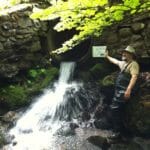
By Keith Curley I left New Hampshire 16 years ago to come work for TU in Arlington, Va., but often return home to visit family and reconnect with the rivers, lakes and streams where I learned to fish. On one recent trip I had the good fortune of joining TU’s New Hampshire State Council for…
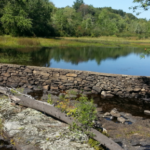
By Chris Wood Last week, I saw a video celebrating the removal of the Tack Factory Dam on Third Herring Brook in Massachusetts. Like all dam removals, it involved many partners especially the North and South Rivers Watershed Association, local TU chapters, the MA/RI Council, NOAA, and Steve Hurley of the Massachusetts Division of Fisheries…
Federal resource agencies such as the U.S. Fish and Wildlife Service, the U.S. Forest Service, and the U.S. Environmental Protection Agency (EPA) provide essential services to protect, restore, and responsibly manage our public lands, waters, and fish and wildlife resources. Strong funding is essential to ensuring that these and other resource agencies have the staff…
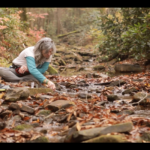
Each week, dozens of volunteers head afield in the East as part of Trout Unlimited’s citizen science efforts. In the mid-Atlantic region much of the effort has been focused on TU’s shale gas and pipeline monitoring efforts. Jake Lemon, who heads that program, recently reached out to three dedicated volunteers to find out what drew…
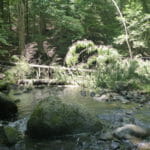
Crews spent weeks loading Poorfarm Brook in Gilford, N.H., with wood structures to enhance habitat. By Colin Lawson and Erin Rodgers Trout Unlimited’s staff had a busy year in New Hampshire in 2018, spending some time monitoring previously completed projects, installing new projects, and evaluating opportunities for new projects in 2019 and 2020. From site visits, to completing field surveys, to…
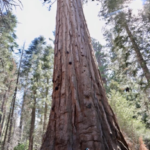
Editor’s note: The TU Costa Five Rivers Program sent a handful of student-anglers on a road trip across America in search of native trout. On the team’s final stop, they visited California. Sequoia National Forest Located in south-ce ntral California, Sequioa National Forest encompasses slightly less than 2,000 square miles. It is named, as is…
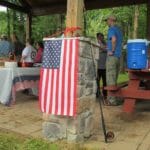
Congratulations to Doc Fritchey TU #108 for serving our nation’s military family through its 9th Annual Home Waters event. 13 veterans who participated in the Home Waters event joined Trout Unlimited and DFTU through the free one-year membership for veterans! This is a wonderful example how TU chapters may use the Veterans Service Partnerhsip (VSP)…
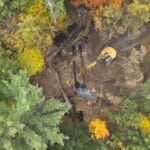
2023 was a good year for Great Lakes coldwater conservation, marked by an influx of federal funding for necessary infrastructure upgrades.
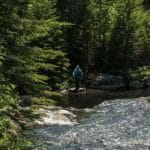
Trout Unlimited worked with the Trust for Public Land and the Maine Department of Inland Fisheries and Wildlife to purchase and protect an 8,000-acre parcel in Maine’s North Woods that exemplifies the best of Maine’s wild brook trout habitat. The parcel protects Cold Stream, a high-value brook trout stream, from its source to its mouth,…
2021 Action on climate changing moving ahead in Washington by Chase S. Whiting, 02/10/2021 2020 2019 2018 2017 2016 2015 2014
About us No See Um Lodge is a family-run operation that was established by Jack Holman in the early 70’s. Today his son, John, who is both a pilot and a guide, maintains No See Um’s well-earned reputation for pampering and pleasing its guests. John has been living, fishing, guiding and flying in Alaska for…